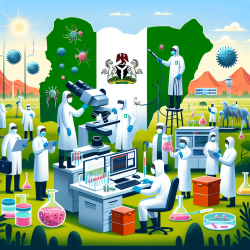Introduction
In the world of veterinary research, ensuring the safety of researchers and the public is paramount. The study titled Status of Laboratory Biosafety and Biosecurity in Veterinary Research Facilities in Nigeria sheds light on the current state of biosafety in Nigerian veterinary labs. This research highlights areas of concern and offers insights that can be valuable to practitioners worldwide.
Key Findings
The study involved 74 participants from 19 facilities across Nigeria. It revealed that:
- 94.6% of respondents had poor general knowledge of laboratory biosafety.
- Only 17.6% reported the availability or use of personal protective equipment (PPE).
- 63.5% had no access to biosafety level (BSL)-1–3 facilities, and none had access to BSL-4 facilities.
- Rabies virus was the most researched pathogen, with 31.1% of respondents involved.
- 71.6% were unaware of laws guiding biosafety.
Improving Your Skills
As a practitioner, there are several ways you can enhance your skills and ensure safety in your research environment:
1. Enhance Knowledge and Training
Regular training and updates on biosafety protocols are crucial. Consider organizing workshops or webinars to improve awareness and knowledge among staff.
2. Invest in PPE and Biosafety Devices
Ensure that your facility is equipped with the necessary PPE and biosafety devices. Regular checks and maintenance of these devices can prevent potential hazards.
3. Develop and Implement SOPs
Standard Operating Procedures (SOPs) should be developed and regularly updated to reflect the latest safety standards. This ensures consistency and safety in laboratory practices.
4. Stay Informed on Biosafety Laws and Regulations
Familiarize yourself with national and international biosafety regulations. This knowledge helps in maintaining compliance and ensuring the safety of your research environment.
Encouraging Further Research
The findings of this study highlight the need for further research in veterinary biosafety. Practitioners are encouraged to explore innovative solutions and collaborate with international bodies to enhance biosafety standards.
Conclusion
The insights from this research are a wake-up call for veterinary research facilities worldwide. By implementing these recommendations, practitioners can improve their skills and contribute to a safer research environment.
To read the original research paper, please follow this link: Status of Laboratory Biosafety and Biosecurity in Veterinary Research Facilities in Nigeria.










